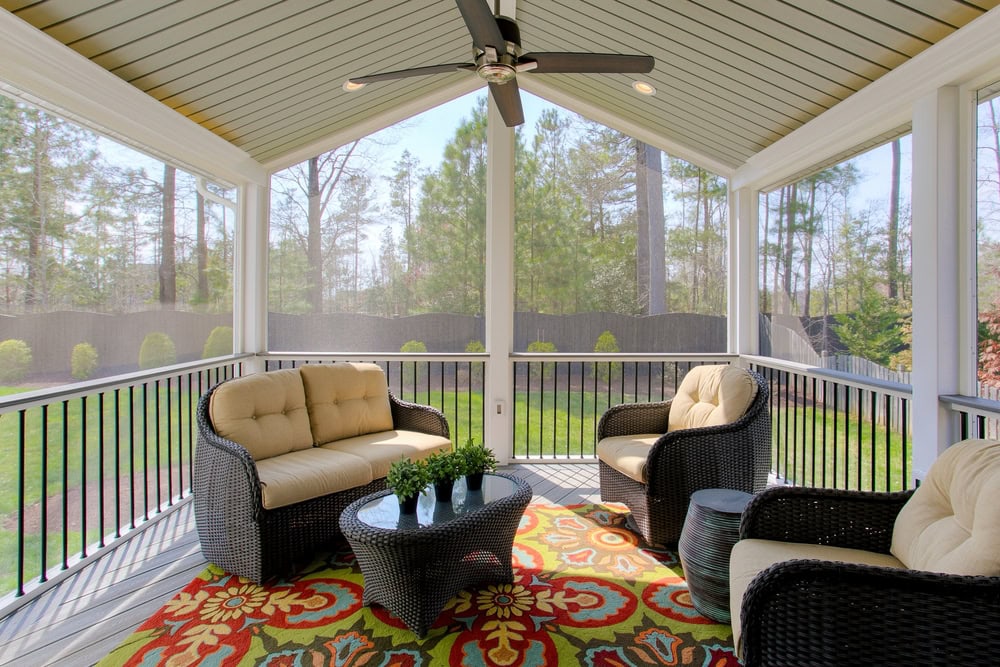Beauty editors test literally hundreds of products over the course of our careers, many of them unnecessary/weird mashups. So I was a bit skeptical when I was assigned this story on best tinted sunscreens. I thought: Isn't face sunscreen on its own more beneficial? Isn't tinted sunscreen just makeup with an SPF afterthought? Am I turning into the beauty world's Andy Rooney? Why does every product in 2025 have to do two jobs? As it turns out, my skepticism was completely misguided: "Tinted sunscreens can be especially beneficial for mature skin as they not only provide necessary sun protection but also even out skin tone and reduce the appearance of imperfections," says Los Angeles-based facial plastic surgeon Dr. Kay Durairaj (or Dr. Kay, as she is affectionately known to her legions of Instagram fans). Turns out, tinted sunscreens have significant value for everyone, and older faces in particular. To understand why, it helps to know a few foundational facts about sun protection itself.
How do tinted sunscreens work? There are two main types of sunscreen — mineral and chemical. Chemical sunscreens, which contain FDA-approved chemicals that absorb into the skin and act as a kind of sponge for harmful rays; and mineral sunscreens, which use literal minerals like titanium dioxide and zinc oxide to create a physical shield that protects skin from UV light (they're also referred to as "physical" sunscreens). Zinc oxide and titanium dioxide are potent white mineral powders that stubbornly will not dissolve in water or oil, which is why, when you use them, they leave behind that unpleasant-ghostly white film or "cast." Enter the "tint" of tinted sunscreens, which is not so much about covering facial blemishes, like, say, a concealer stick would, but more about eradicating the white cast/chalkiness sun-blocking minerals leave on a face. Most tinted sunscreens are mineral SPF, with a sheer tint that's often considered "universal" (though still may appear too light for deeper tones). Many tinted sunscreens additionally contain antioxidants and skin-healing ingredients like vitamin E.
If you're looking for more on SPF protection, make sure to also check out my recommendations for the best body sunscreens and the best sunscreens for sensitive skin, along with our top favorite reef-safe sunscreens of the year.
Table of contents
Update, April 16, 2025: We checked all product prices and availability and expanded our section on factors to consider before purchasing. Our number one pick for the best tinted sunscreen remains unchanged.
The best tinted sunscreen overall
Active Ingredients: Zinc oxide, titanium dioxide, iron oxides | SPF: 45 | Size: 1.7 ounces | Water-Resistant: Yes | Reef safe: Yes | Cruelty-Free: Yes
Peter Thomas Roth's award-winning, all-mineral, tinted facial sunscreen ticks all the boxes: it's water-resistant, provides broad spectrum UVA/UVB sun protection, works particularly well to reduce redness and is non-irritating for sensitive skin. Plus it's lightweight but still hydrating and skin-nourishing with a high-quality SPF 45. The tint also magically works for nearly every skin tone, though those with the fairest of skin may find it too dark.
Pros
- High-quality mineral sunscreen
- Lightweight texture but still moisturizing
- Tint works for most skin tones
- Reef safe
- Water-resistant
Cons
- Some reviewers find the tint too dark
Other top tinted sunscreens we recommend for 2025
Active Ingredients: Titanium dioxide, iron oxides | SPF: 50 | Size: 1.7 ounces | Water-Resistant: Yes | Reef safe: Yes | Cruelty-Free: No
The award-winning La Roche-Posay Anthelios sunscreen is considered among the best in the world. The texture is lightweight, almost watery (like a thin day cream), which soaked into my skin on contact.
Once on, the formula looked natural, with no greasy feel, no stickiness and no glossy sheen. In fact, this is my only complaint about the Anthelios face sunscreens: They're matte, which is not always the best for mature skin. On the plus side, they're fragrance-free, and, even when I went super close to my eyes, the cream didn't sting. All in all, I'd give the application experience a 9/10.
Pros
- Silky texture
- Powerful coverage
- Safe for all skin types
- Reef safe
- Unscented
- Complexion smoothing
Cons
- Pricey
- "Universal" tint may not work for darker skin tones
Active Ingredients: Titanium dioxide, zinc oxide | SPF: 30 | Size: 1.7 ounces | Water-Resistant: No | Reef safe: No | Cruelty-Free: No
The "universal" tint in this tinted SPF 30 sunscreen blends into many skin tones and the mineral-based formula provides broad-spectrum protection against UVA and UVB rays while — thanks to skin-hydrating ceramides and niacinamide — locking in moisture. Keep in mind it's not water-resistant nor reef safe, so not your best pick at the beach. Still, at $13, it's a quality sunscreen for everyday use.
Pros
- Strong SPF protection
- Trusted skin care brand
- Good for sensitive skin
- Tint blends into most skin tones
- Moisturizing
Cons
- Not reef safe
- Not water-resistant
Active Ingredients: Zinc oxide | SPF: 40 | Size: 1.7 ounces | Water-Resistant: Yes | Reef safe: No | Cruelty-Free: No
This standout mineral sunscreen with zinc oxide is exceptionally good for dry, sensitive or mature skin. It's packed with ingredients like hyaluronic acid to keep your face looking dewy. EltaMD is both a mineral and chemical SPF, so the texture feels smooth going on and it absorbs fast. It's also noncomedogenic, fragrance- and oil-free.
Pros
- Ultra-moisturizing
- Broad spectrum coverage
- noncomedogenic, fragrance- and oil-free
- Silky texture
- Good for dry and mature skin
Cons
- Contains chemicals that are not reef safe
Active Ingredients: Avobenzone, Homosalate, Octisalate | SPF: 40 | Size: 1.7 ounces | Water-Resistant: Yes | Reef safe: Yes | Cruelty-Free: Yes
Glowscreen is unique in that it's a "clean" chemical sunscreen, meaning it's made with chemicals, yes, but never those known to harm marine life, coral reefs or, especially, humans.
This multitasking cream works as a skin primer, a high-quality sunscreen and a tinted moisturizer, and, with a boost from hyaluronic acid, vitamin B5 and niacinamide, it leaves behind a pretty pearly glow. Nearly 10,000 5-star reviews on Amazon rave about its complexion-perfecting powers, though some found it to be a bit too shiny and not ideal for oily skin nor for everyday use.
Pros
- Evens complexion
- Leaves skin glowing
- Works as a makeup primer
- High-quality "clean" chemical sunscreen
- Reef sale
- Cruelty-free
Cons
- Can be a bit too greasy for those with oilier complexions
- Expensive
Active Ingredients: Zinc oxide | SPF: 40 | Size: 1 ounce | Water-Resistant: No | Reef safe: Yes | Cruelty-Free: Yes
If you're looking for a light coverage foundation that will leave your skin dewy and completely aglow, Ilia's Skin Tint is for you. It comes in 30 shades, contains hyaluronic acid, niacinamide and SPF 40 and — more than a foundation — is basically the best sunscreen makeup around.
Pros
- 30 shade choices
- Evens skin tone/smooths imperfections
- Leaves skin dewy
- Skin nourishing
- All-day wear SPF 40
Cons
- Can be a bit greasy
- Not water-resistant
- Pricey
Active Ingredients: Zinc oxide | SPF: 30 | Size: 1 ounce | Water-Resistant: Yes | Reef safe: Yes | Cruelty-Free: Yes
This rich, luxurious-feeling foundation-sunscreen is more makeup than sun block but (when you use enough!) it still provides the broad-spectrum SPF 30 UVA/UVB protection you need. It comes in 17 shades covering a wide swath of skin tones and the coverage is light to medium but buildable, if you need such a thing. If you want to cut a step from your morning makeup routine, this is a good replacement for any non-SPF foundation you currently use. One caveat: It does have a slightly tacky feel.
Pros
- 17 shades options
- Cruelty-free
- Reef safe
- Moisturizes skin
- Broad spectrum coverage
Factors to consider when choosing a tinted sunscreen
SPF: Most dermatologists recommend looking for sunscreens with an SPF of 30 or higher for the best sun protection.
Formula: As we mentioned above, there are two main categories of sunscreen, chemical and mineral. Either formula is fine, but most dermatologists recommend that those with sensitive skin use a mineral formula. Additionally, while most sunscreens come in liquid form, you can actually find a few stick sunscreens that work great for on the go.
Ingredients: It’s an added benefit if your sunscreen contains moisturizing ingredients like vitamin E or antioxidants to help prevent further skin damage.
Water resistance: If you will be sweating or swimming (or otherwise getting wet), a water-resistant sunscreen can give you a bit of insurance. Water-resistant sunscreens will be labeled as such and will also typically indicate how long they will remain effective as you swim or sweat. Still plan to reapply after toweling off and at least every two hours, regardless.
Reef safe: Mineral sunscreens labeled as "non-nano" with zinc oxide or titanium dioxide are the safest bet for reefs. Avoid chemical sunscreens with oxybenzone and octinoxate, which can bleach coral. Also, steer clear of octocrylene, homosalate and parabens, which can harm coral. Sunscreens are often labeled as "reef-safe" if they are free of coral harming ingredients.
Cruelty-free: If you want to avoid all animal products and testing, choose a tinted sunscreen labeled as vegan. For cruelty-free options, look for certifications like Leaping Bunny or PETA's "Beauty Without Bunnies" logo.
FAQs
Are tinted sunscreens safe?
Yes! Most tinted sunscreens are actually mineral sunscreens, which many dermatologists prefer for both sensitive and mature skin — especially on our faces. "In my opinion, mineral sunscreens are the best sunscreens because they reflect UV rays off the skin without relying on a chemical to do so," says Dr. Kay. "Mineral sunscreens provide a barrier that is less likely to cause irritation or allergic reactions, making them ideal for sensitive and mature skin types."
How do I use a tinted sunscreen?
Tinted sunscreens are used exactly like regular sunscreens. First, you choose a tinted sunscreen from a reputable company — preferably, one with SPF 30 or higher, with broad spectrum protection. The pigment added should offer sheer, light-to-medium makeup coverage, and be subtle enough that you can apply a recommended full teaspoon to your face without looking like a clown.
Additionally: "Look for tinted sunscreens that contain iron oxides, which offer protection against visible light and can help prevent the exacerbation of pigmentation issues like melasma," says Dr. Kay, whose own KD Skin Mineral Glow Sun Defense contains iron oxides which additionally, she says, help it blend into the skin and never look chalky, ashy or white (making it suitable for darker skin types too).
Best tinted sunscreen specs comparison chart
Active Ingredients | SPF | Size | Water-Resistant | Reef Safe | Cruelty-Free | |
Peter Thomas Roth Max Mineral Tinted Sunscreen | Zinc oxide, titanium dioxide, iron oxides | 45 | 1.7 ounces | Yes | Yes | Yes |
La Roche-Posay Anthelios Tinted Sunscreen | Titanium dioxide, iron oxides | 50 | 1.7 ounces | Yes | Yes | No |
CeraVe Hydrating Tinted Mineral Sunscreen SPF 30 | Titanium dioxide, zinc oxide | 30 | 1.7 ounces | No | No | No |
EltaMD UV Daily Tinted Sunscreen | Zinc oxide | 40 | 1.7 ounces | Yes | No | No |
Supergoop Glowscreen SPF 40 | Avobenzone, homosalate, octisalate | 40 | 1.7 ounces | Yes | Yes | Yes |
Ilia Super Serum Skin Tint SPF 40 | Zinc oxide | 40 | 1 ounce | No | Yes | Yes |
Tower 28 Beauty SunnyDays SPF 30 Tinted Sunscreen Foundation | Zinc oxide | 30 | 1 ounce | Yes | Yes | Yes |
Meet our expert
Dr. Kay Durairaj, Los Angeles-based facial plastic surgeon
.png)
 German (DE)
German (DE)  English (US)
English (US)  Spanish (ES)
Spanish (ES)  French (FR)
French (FR)  Hindi (IN)
Hindi (IN)  Italian (IT)
Italian (IT)  Russian (RU)
Russian (RU) 




Comments